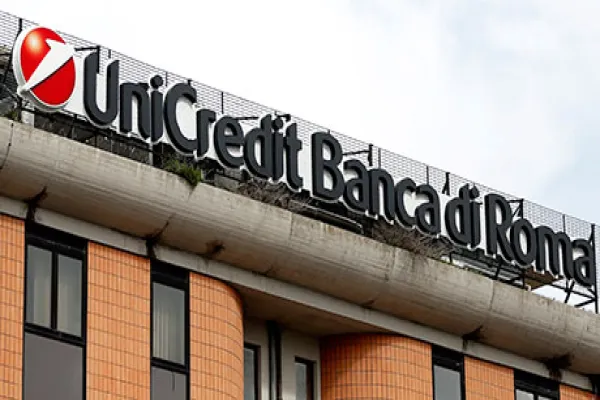European investors have, over the past year, roundly rejected one of the great themes predicted by market strategists: a massive migration out of bonds.
“Up until the last six months we’ve had a pretty good run in equity markets, so you would have thought that the great rotation out of bonds would have happened,” says Curt Custard, head of global investment solutions at UBS Global Asset Management. “But that really isn’t the case. In the wholesale and institutional channels, investors are still grasping for yield — still looking for income.”
The firm, part of Switzerland’s UBS banking group, slips one place, to fourth, in the Euro 100, Institutional Investor’s exclusive ranking of Europe’s largest asset managers, even as its assets increased 10.7 percent in the 12 months ended June 30, to €841.9 billion ($1.1 trillion). Europe’s giant insurers, Germany’s Allianz and France’s AXA, top the list again this year while BlackRock jumps two places, to third. A full table, including a breakdown of asset allocations, can be found under Europe’s Top 100 Money Managers in the navigation table in the top right.
In part, the continued attraction of fixed income simply reflects the state of the markets. Doubts about the euro area economy have caused European stocks to lag the U.S. market this year, with the Euro Stoxx 50 index down 2.7 percent for the year as of October 24. And far from bottoming out, interest rates have plumbed new depths. The yield on Germany’s benchmark ten-year government bond has fallen by 86 basis points over the past year to stand at just 0.89 percent, and yield spreads on many other euro area bonds have narrowed.
Other reasons are both negative and positive.
On the negative side, investors are skeptical about the ability of equities to keep delivering returns given concerns about the global economy in general and the slow-growing, debt-ridden euro zone economy in particular. Didier Saint-Georges, member of the investment committee of France’s Carmignac Gestion, which falls nine places to No. 88 with €45.2 billion in assets, says investors actually moved money out of equities and into high-quality fixed income in September. “Customers started to realize that fixed-income asset allocation into safe-haven issuers is not quite dead,” he says.
On the positive side, despite worries about the low current returns available on bonds, some investors see exciting new avenues of investment in the sector. “Many clients feel opportunities in fixed income are much broader than before,” says John Stainsby, head of U.K. institutional business at J.P. Morgan Asset Management, which retains 19th place, with assets of €309.9 billion. These new opportunities require a good deal of new thinking and discussion. “The vast majority of the conversations we have with clients are about fixed income,” says Stainsby. Many clients, particularly insurers and pension funds, are looking for inflation protection and ways to earn returns that are higher than what’s available with conventional fixed-income strategies. “Allocations to fixed income are rising,” Stainsby notes.
What are some of these broader opportunities? Some managers cite growing interest in direct lending. BNY Mellon Asset Management, which rises one place to break into the top ten this year, with assets of €547.2 billion, has seen strong levels of inquiry in European direct lending through Alcentra, its wholly owned European direct lending boutique, according to Adrian Gordon, head of institutional distribution, EMEA. “We’ve seen far more demand there than in property or infrastructure,” he says. In addition to the yield pickup over most bonds, clients like the floating-rate nature of much direct lending, which enables them to profit — rather than take a hit — from an eventual rise in the benchmark interest rates on which these floating rates are based, says Gordon. Barring such unconventional approaches to fixed income, it is difficult for clients to achieve yields above low single digits in the euro zone.
Some industry executives say clients are beginning to realize that, with yields for most European fixed-income instruments at such low levels, they cannot rely on the asset class forever. Custard of UBS characterizes the decades-old bull market in European bonds as being in “injury time in a soccer game” — it gives bond investors a little more time, but soon the game must end.
He advises clients to steer clear of “some of the more esoteric stuff ” in the European market, such as high-yield bonds and leveraged loans. Custard argues that these markets are too illiquid and “present a risk if there’s a dislocation in the market.”
Johannes Müller, CIO of wealth management for Germany at Deutsche Asset & Wealth Management, thinks that income-related equity products such as dividend funds are “the logical step to slowly move into the equity space.” The asset management arm of the German bank slips one place, to seventh, with assets of €651.1 billion.
The sense that investors must sooner or later look outside fixed income is echoed by Giordano Lombardo, CIO of Milan-based Pioneer Investments, which rises one place to No. 35, with €185.5 billion in assets. “Income is the main story and will remain so for several years,” says Lombardo. His team is encouraging investors “to seek income from other asset classes” such as equities through multiasset income funds. Net inflows into flexible income products, including multiasset funds, are €3.7 billion so far this year.
Investors are also turning their sights away from the euro zone. “The decline in the value of the euro and forecasts that it could even fall to parity with the dollar are catching increasing attention,” says Deutsche’s Müller. Euro weakness, he says, has led to growing interest in dollar and sterling investments across all asset classes. • •





